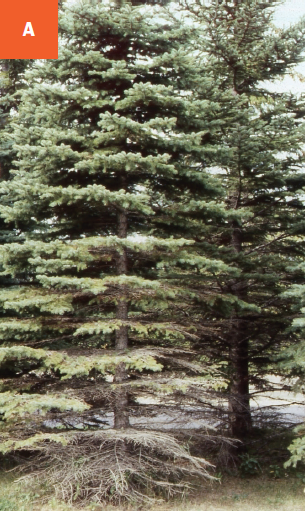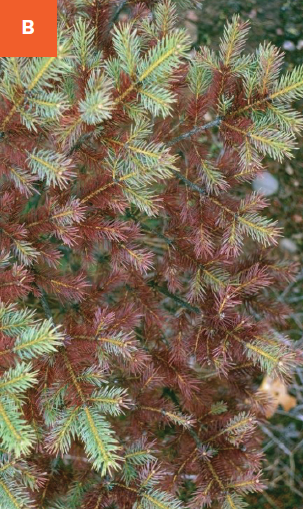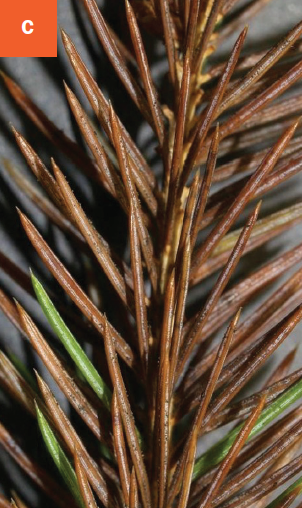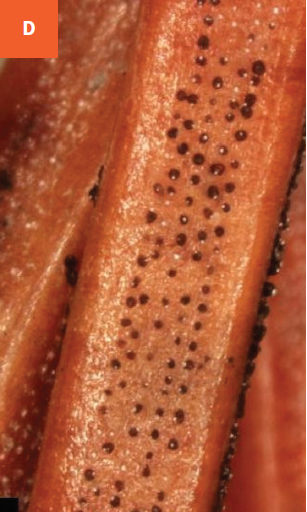Rhizosphaera Needle Cast
Rhizosphaera kalkhoffii (fungus)
HOST Colorado blue spruce, Engelmann spruce, Douglas-fir, fir, pine, Western hemlock
DAMAGE/SYMPTOMS In spring or early summer, older innermost needles turn brown to purple while younger needles at branch tips stay green. Small, black spheres (fruiting bodies) emerge in rows out of stomata of infected needles. Infected, discolored needles fall off in late summer or fall. Symptoms are more severe on lower branches. The branches of affected trees thin over time.
DISEASE CYCLE The fungus overwinters in infected needles still living on the tree and in needles on the ground. Starting in spring, spores are released throughout the growing season from the black fruiting bodies and distributed to new needles by wind and splashing water. New needles are infected during mild and wet weather. Old needles may be infected due to high pathogen pressure and favorable environmental conditions. Affected needles are dropped approximately 12 months after initial infection.
MANAGEMENT Rake up infected needles and prune out and dispose of affected branches to reduce the disease source. Disinfect pruning tools between cuts with 70% ethyl alcohol or a standard household disinfectant spray. Provide good spacing between trees to optimize air circulation. Re-direct sprinklers to avoid hitting the tree canopy during irrigation. Affected trees can be treated with fungicides containing the active ingredient copper hydroxide or chlorothalonil. These fungicides can only protect new needles, as infected needles can’t be cured. Apply fungicides in spring when new needles have grown half their mature length. A second treatment should be applied three to four weeks later when new needles are full grown. Strictly follow instructions on the pesticide labels.
A Spruce tree affected by rhizosphaera needle cast disease. B Bronze-brown colored older needles. C Dark fungal fruiting bodies emerge out of infected needles. D Dark, round fruiting bodies emerge out of stomata of infected needles.




